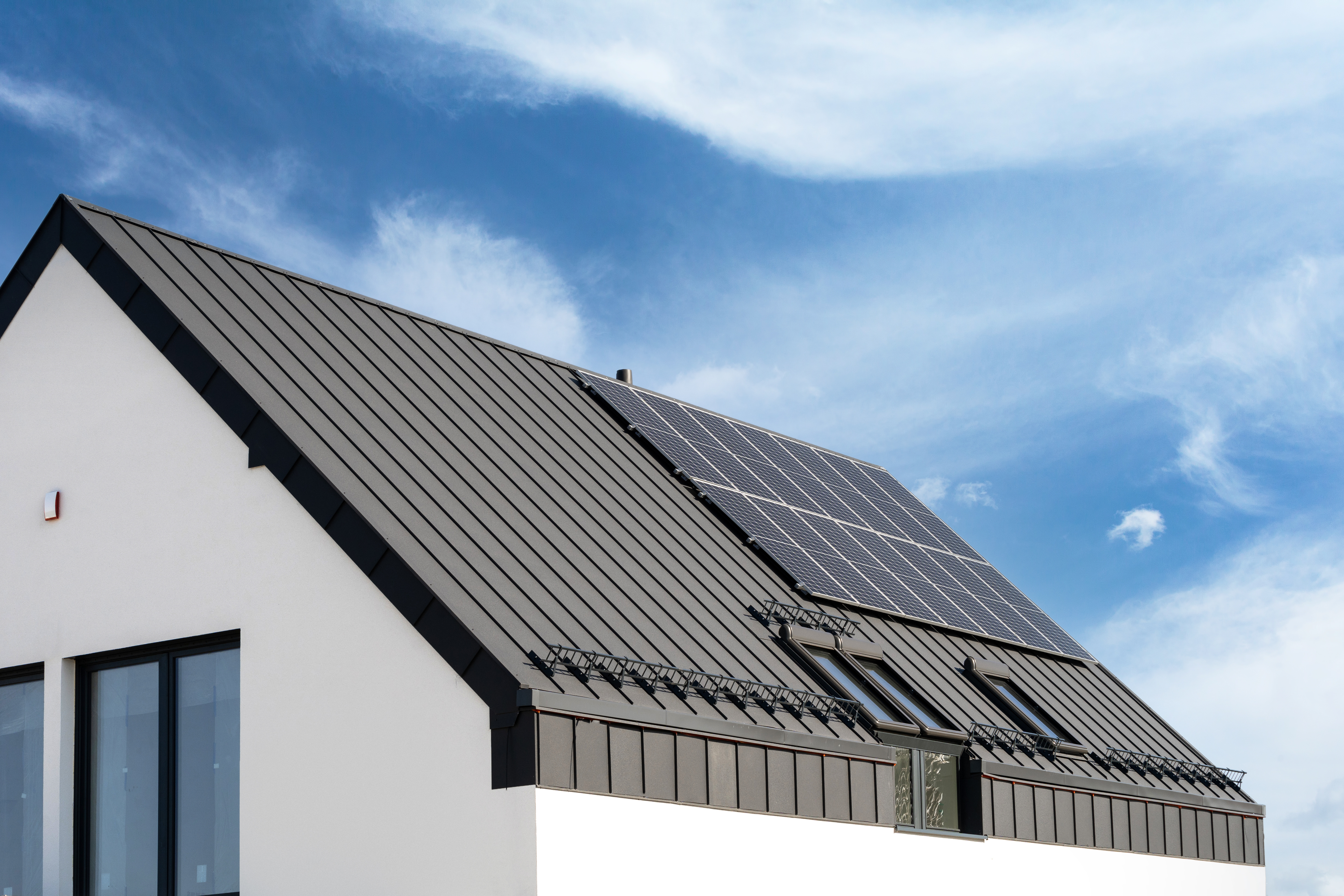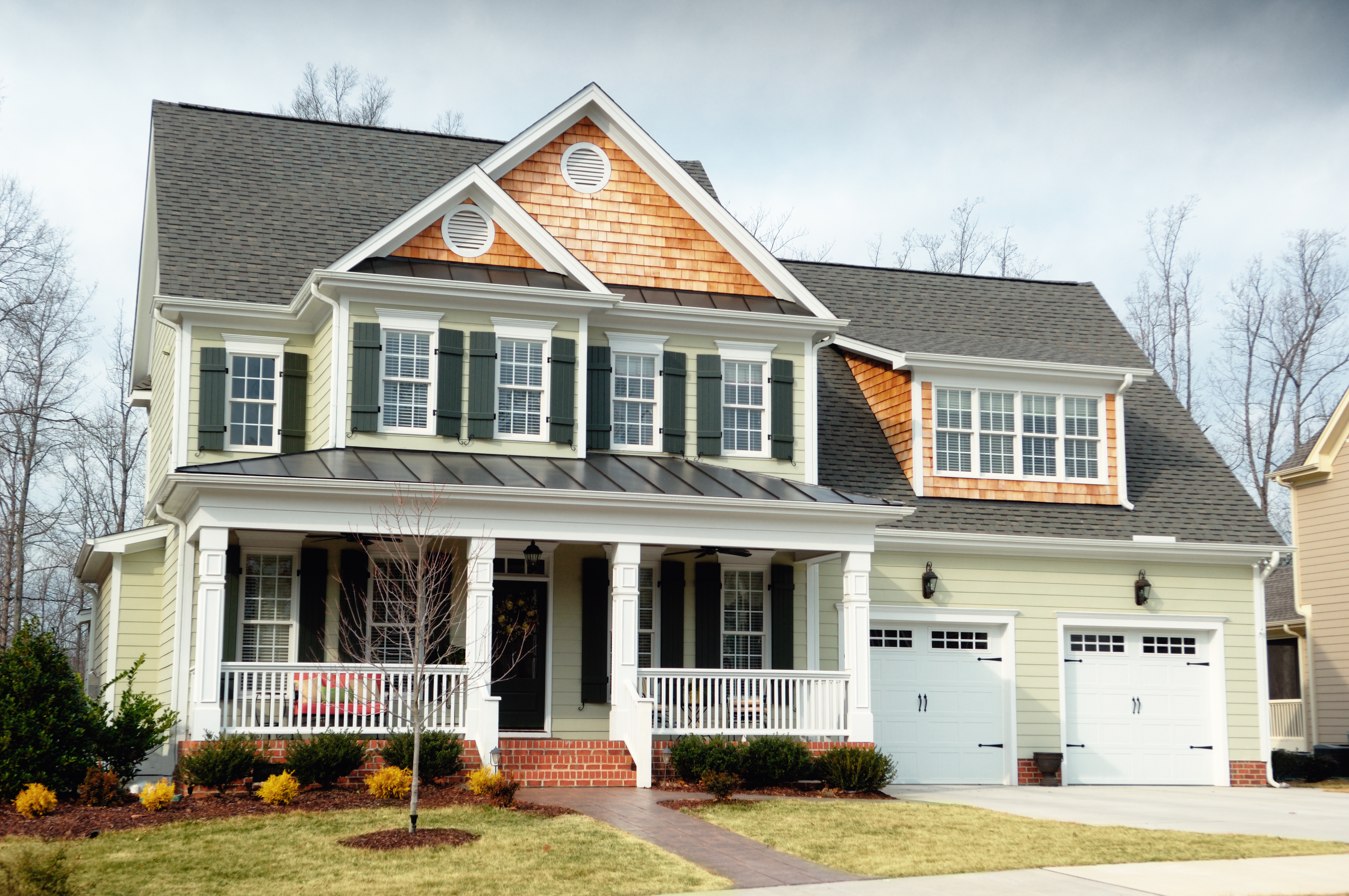
A metal roof can defend your home against Ohio’s varying weather conditions. Learn how much a metal roof costs in Columbus, OH.
Stay safe from sliding snow this winter


Metal roofs are a popular choice for many home styles, but in areas that get a lot of winter weather, snow sliding off the roof can be a hazard. Snow guards prevent snow from falling off the roof and potentially causing safety risks, but how do you know what kind of snow guard is right for your metal roof? This guide explores some of the most popular options to help you make the right decision.
| Snow Guard Material | Advantages |
|---|---|
| Plastic | Lightweight, affordable |
| Metal | Durable, lightweight |
| Rubber | Resistant to extreme temperatures |
Adhesive snow guards are installed without hardware, sticking to the roof’s surface with an adhesive backing. These snow guards come in several different styles, including pads, which feature rectangular or square pads with upright components to hold snow that are placed intermittently across the roof, and strips, which are longer than pads and cover a wider section of the roof with one piece.
Adhesive guards are easy to install and do not damage the roof, as no hardware is needed to affix the guards to the roof’s surface. In the event of failure due to excessive snow weight, adhesive pads won’t tear or puncture the roof—they’ll simply need to be reinstalled with more adhesive.
| Pros | Cons |
|---|---|
| Easy to install | Less secure |
| Available in various styles | Adhesive may fail over time |
| No roof damage | Lower weight capacity |
Best for: Homes in areas with light to moderate snowfall

Bracket-style snow guards use mounted brackets that are screwed or bolted onto the roof for added weight capacity and stability. The brackets may support any of a number of guard styles, including bars, fences, or individual upright snow stops. Bracket-style snow guards are durable and hold up to heavy snowfall with less chance of failure than other fastening methods.
| Pros | Cons |
|---|---|
| High weight capacity | Requires puncturing roof surface |
| Durable | Not compatible with all metal roofs |
| Stable | Can damage roof if bracket fails |
Best for: Homes with heavy snowfall or ice
As the name suggests, clamp-on snow guards are attached to the roof using clamps rather than being screwed or bolted on. The clamps can be placed at your desired spacing and can support different styles of snow guards, such as bars, fences, or individual upright stops. Clamp-on guards do not penetrate the roof, so they don’t compromise the roof surface, but that makes them less stable than bracket guard systems.
| Pros | Cons |
|---|---|
| Easy to install | Holds less weight |
| Movable/removable | May fail in heavy snow |
| Works on many roof types | Less secure |
Best for: Standing seam metal roofs in areas with moderate to heavy snowfall

Bar-style snow guards are continuous horizontal bars that span the width of the roof to provide a stop for sliding snow. They can be affixed with brackets or clamps and effectively hold back a moderate to heavy amount of snow or ice.
| Pros | Cons |
|---|---|
| Provide full roof coverage | Less effective against very heavy snow |
| Unobtrusive | More involved installation |
| Durable | Less effective on steep roofs |
Best for: Medium-pitched roofs in areas with moderate snowfall

Also known as snow rails, fence-style snow guards consist of multiple metal bars that form a “fence” to block more snow than single bar-style guards. Fence-style guards are ideal for areas with heavy snowfall, although when compared to other snow guards or snow rails, they have a higher profile and are much more visible.
| Pros | Cons |
|---|---|
| Effective with very heavy snowfall | Most expensive option |
| Extremely durable | More visibly noticeable |
| Compatible with most roof types | Difficult to install |
Best for: Steep-pitched roofs or homes in areas with heavy snowfall
Different metal roofs will have different needs when it comes to snow guards. When deciding on the best system for your home, take the following factors into account.
A steeply pitched metal roof will need a more durable snow guard system that can hold more weight than a more flat-pitched roof will. You’ll want to select a snow guard that prevents snow from slipping off a steep pitch while also allowing it to melt at a consistent rate to avoid ice dams forming on a metal roof.
It’s important to know how much snowfall is normal in your area so you know how much snow your roof can hold. The type of snow guard you choose will depend heavily on how much snow it’s expected to hold back on a regular basis—houses in areas with extreme snowfall will need stronger, more durable systems capable of holding more weight.
The style of metal roof you have will also dictate what kind of snow guard you can install. For example, standing seam or corrugated metal roofs will need clamp or adhesive-style guards since these roof styles can’t be drilled into.
You’ll also want to consider how the snow guard system you install looks. In general, the stronger the snow guard, the more noticeable it’ll be. If you want to keep your snow guards low-profile, find out the least obtrusive system you can install that’ll meet your needs.
Whether or not snow guard installation can be a DIY job depends on what kind of guards you’re installing and how safely you’re able to work on your roof. Adhesive and clamp-on snow guards are easier to install than bracket-style, but any roof work poses a safety and fall risk, so we don’t recommend it. You should hire a professional roofer to avoid the risks of falling and incorrect installation. The cost to install snow guards varies on the type of guard and size of your roof but averages between $1,000 and $4,000.
From average costs to expert advice, get all the answers you need to get your job done.

A metal roof can defend your home against Ohio’s varying weather conditions. Learn how much a metal roof costs in Columbus, OH.

Dealing with a visibly damaged roof or leak? Learn about roof repair costs in Columbus to see how much you’ll need to budget for a permanent solution.

Learn about roof replacement costs in Columbus and what factors are at play to budget accurately and make sure you’re getting a fair price.

When you install a new roof, you want it to last as long as possible. Knowing what voids a roof warranty helps you avoid situations that nullify the warranty.

Shingles won't cut if you have a flat roof or a roof with minimal pitch. You may want to consider torch down roofing. Here’s what you should know.

Turbine roof vent problems may arise after a storm or pop up randomly when you're least expecting them. Here are some common issues to check and look out for.